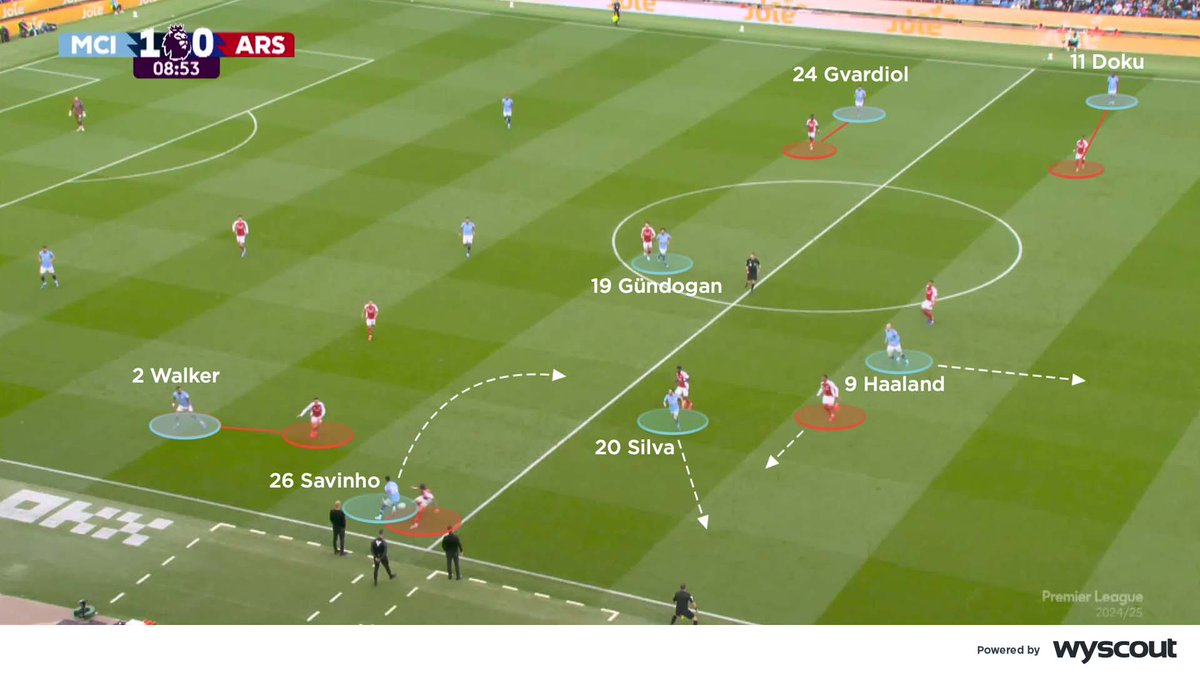🆕Fresh analysis! 🙌
Borussia Dortmund marked the return of the Bundesliga with a convincing victory in the Revierderby against FC Schalke 04. Our professional coaches assess 👇
coachesvoice.com/tactical-analy… #BVB
Borussia Dortmund marked the return of the Bundesliga with a convincing victory in the Revierderby against FC Schalke 04. Our professional coaches assess 👇
coachesvoice.com/tactical-analy… #BVB
Dortmund were organised into a 3-4-3 formation, led by the potent front three of Julian Brandt, Thorgan Hazard and Erling Braut Haaland, during the periods they had possession #BVB 

That 3-4-3 became a 5-4-1 when they defended, largely through Raphael Guerreiro and Achraf Hakimi withdrawing into defence #BVB 

The movement of Brandt and Hazard was used to create an assymetrical structure in their pursuit of overloads on one side of the pitch #BVB #BVBS04 

Dortmund’s wing-backs, central midfielders and wider central defenders combined to negate the potential attacking treats posed by Suat Serdar and Daniel Caligiuri #BVB #BVBS04 

Schalke adopted a 4-1-5 while they had possession; Weston McKennie represented their sole central midfielder, and was often stretched #BVB #BVBS04 

For the periods they were defending they reorganised into a 5-4-1; Jonjoe Kenny withdrew into defence, and Benito Raman became their lone striker #BVB #BVBS04 

The hosts regularly succeeded in drawing Schalke’s defenders out of position – particularly towards the right – and therefore creating spaces in the final third #BVB #BVBS04 

For the second half, the visitors adopted a back four and a diamond midfield, improving their management of space and the threat Dortmund posed #BVB #BVBS04 

• • •
Missing some Tweet in this thread? You can try to
force a refresh
















